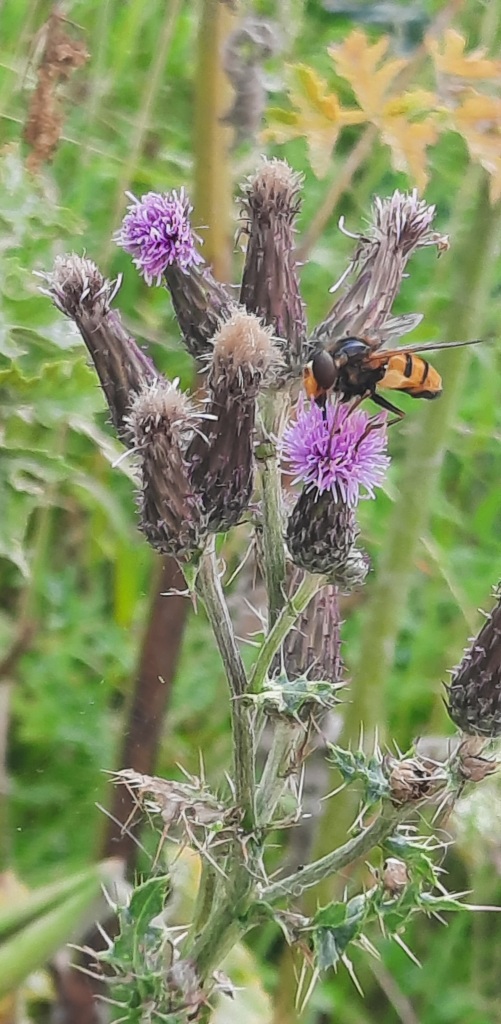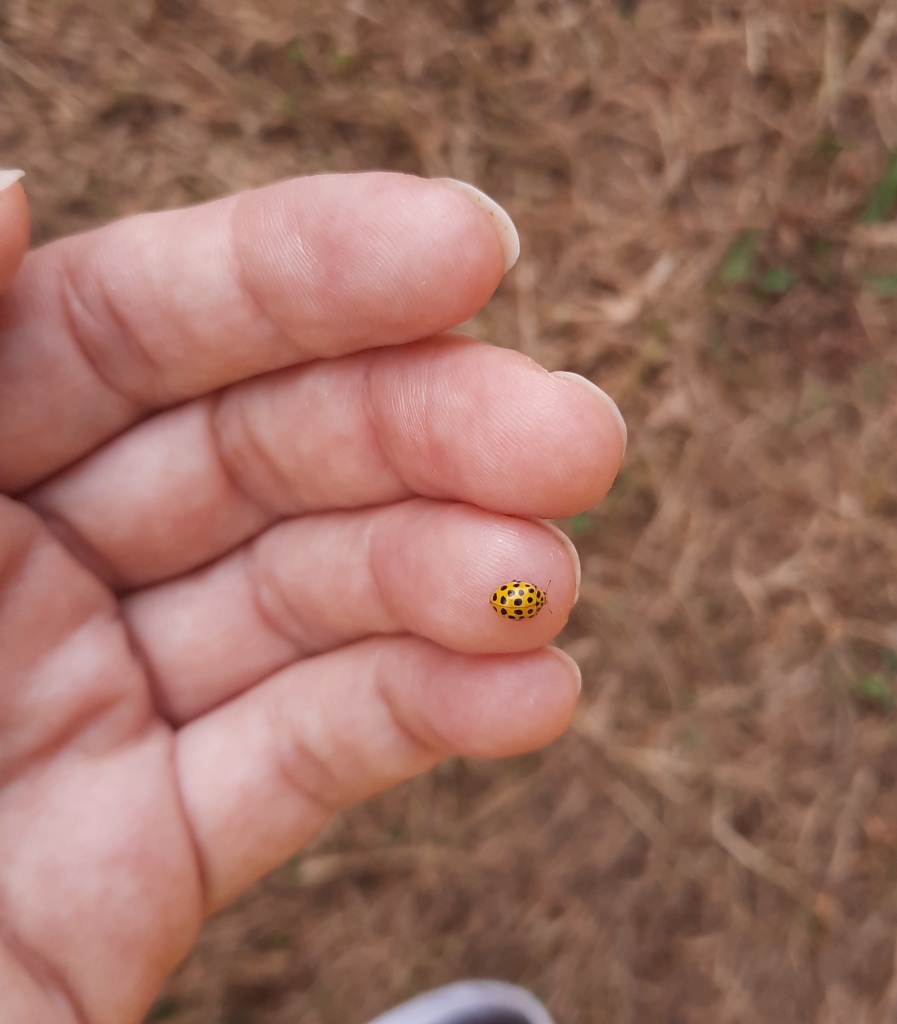Last week, it finally became my turn to catch that wretched Covid bug that has sent the world into a spiraling state of chaos so much over the past two and a half years.
It was inevitable, and I feel incredibly lucky that I made it this far without experiencing it, yet still, the feeling of being suddenly exiled into isolation upon sight of a double-line, will never be fun.
And so came about a prolonged period of virus-enforced rest during which very little was done that required use of a brain. Reading the television guide and making accurate use of the remote was probably the extent of it, certainly on the days when I felt at my worst, but sometimes there is value in being so still, and taking time out of the ordinary.
Whilst taking some time to bathe in the fresh air outside, I noticed things that in normal circumstances I’d perhaps be in too much of a hurry to notice. This bumblebee for example, fastidiously gathering nectar from a wildflower:
I was transfixed by this for a good while, watching it move from bud to bud, taking it for everything it could get before flying on to find more. I was impressed by its determination and ability to scope out what it needed, and lamented the fact the species is in decline whilst appreciating the efforts of conservationists to reverse this. In this moment, I realised I hadn’t actually thought about bumblebees for quite a long time.
Why would I?
But why shouldn’t I?
And then appeared this yellow ladybird, which I was equally in awe of:
I couldn’t remember the last time I’d really seen a ladybird, let alone a yellow one! I’d virtually forgotten they existed, and momentarily wondered in my viral haze if one of the more common red types had just been exposed to too much sun during the recent heatwave. I was intrigued so I – of course – googled it, and realised I had been holding a Psyllobora vigintiduopunctata (or in other words, 22-spot ladybird). I also learned that ladybirds, incidentally, are named after the Virgin Mary. Historic farmers would pray to Mary and request that she protect their crops, and felt those prayers heard when ladybirds appeared and consumed the insects that threatened them. It is a neither sun-blanched nor rare species, but why did it feel like the latter? If one were to land upon my shoulder as I walked to the car on my way to get somewhere, would I even be giving it this much thought, or would I just sweep it away and carry on?
I am not going to pretend that if I had the choice between staring at ladybirds and bees, or being around loved ones, that I’d make the same one imposed upon me last week, but the time did remind me that being still and silent enough to really observe things can sometimes exhume joy and awe from the slightest, most unexpected and hidden sources.
We spend so much of our time rushing around from place to place, ensconced in task to task. I promised myself after lockdown never to take that for granted again, and I won’t, but there’s never any harm in being reminded of the benefits and importance of time to pause. To stop. To notice. To enjoy.
To… bee 😉
Song of the Day: Mighty Mighty – Law
This is a classic example of a genre known as ‘twee pop’. Twee pop emerged in popularity in the UK in the mid-’80’s as result of a compilation cassette – C86 – issued by NME magazine. Sometimes known as ‘jangle pop’, twee pop is a subgenre of indie characterised by simplicity, harmonies and upbeat melodies. In other words, exactly the kind of music you want to listen to when you’re poorly. This track, from Birmingham-based band Mighty Mighty, was one of the songs on the original C86 cassette.


